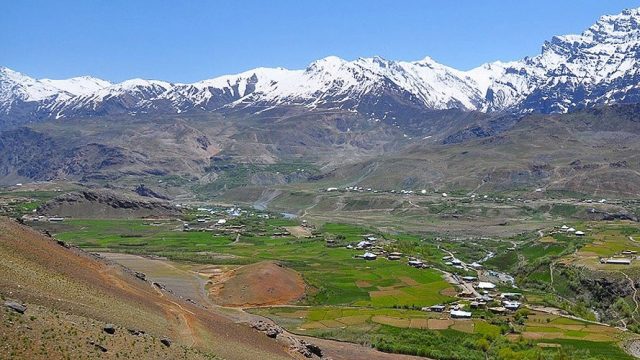While driving through Zanskar, on the way back to Kargil along the Suru Valley from Zanskar, we pass by Sanku, the nearest thing to a town on this route. From here, we digress a few kilometres to see the 7m-tall rock-cut Maitreya statue at the ancient village of Kartse Khar, inhabited by Dard Muslims. This immense statue was carved in the 7th-8th centuries by Buddhist missionaries from Kashmir. The Buddha-tobe stands in calm repose, holding a lotus with a stupa arising out of it. It’s a remnant from a time when Buddhism was the dominant religion in the Suru Valley.

Once in Kargil, digress a little more, turning left toward Srinagar along National Highway 1D. The town of Drass is 60 km beyond Kargil, bordering Kashmir’s Minamar meadows. Drass is the second-coldest inhabited place on Earth, the first being the Siberian village of Oymyakon. It is also where the Hungarian explorer Alexander Csoma de Koros, aka Sikander Beg, met Superintendent of the East India Company’s Stud and seminal Great Gamer, William Moorcroft. Drass is a sleepy town, inhabited by a small Shinaspeaking community of Sunni Muslims. Groves of willow and apricot alongside the snow-streaked Drass River blend, brown and silent, with the dusty fields.

Polo is a passion in Drass and a great time to visit is late June, during the Drass Polo Club’s Lalit Suri Memorial Polo Cup. Players mounted on stunted Ladakhi ponies play a deadly, no-rules version of the sport of princes on a polo ground that’s hard, unforgiving, bone-crushing earth. All around soar tall, serrated, snow-covered peaks of the Great Himalayan Range. Polo is played with a passion in both the Vale of Kashmir and Ladakh, but here in Drass, it comes close to an obsession. Every area of Drass has its own team, and the Drass Polo Club boasts of 24 teams, each consisting of six to eight players. This in a big city would be seen as a mark of great seriousness, but here in a valley that is snowbound for six months in a year, it is truly astonishing.
A road leading north from Drass along the LoC leads to Kashmir’s Talial and Gurez valleys. But it’s firmly closed to all except military vehicles (don’t bother arguing). NH1D beyond Drass pans out across meadows; further west, snow begins to appear on the ground. Pandras village is carpeted with an inch of snow. Beyond Pandras the road begins its ascent through the Great Himalaya range and into the Vale of Kashmir, but we finally turn back, towards Kargil and Leh.




